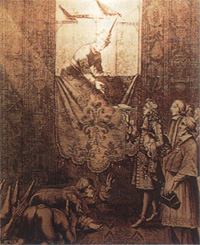|
|
|
Historical Setting
|
The Earliest Inhabitants
The area which is now Thailand
has been populated ever since the dawn
of civil ation in Asia, The first humans
in this region were hunter-gatherers
who lived by hunting wild animals and
gathering whatever grew wild in the
forests. Later on, man leamt to modify
nature, growing cereals such as rice and
breeding livestock. Rice growing communities sprang up. Metal cast
pottery making also became highly-developed skills as these pre
settlements prospered. Cast bronze technology in the northeastern
Thailand dales from around 2000 B.C., making the prehistoric achiever
Thailand just as advanced as those of India and China.
Beginning in the 1960s, archaeo-
logical excavations in various parts
of Thailand have unearthed many
interesting and important sites, a large
number of which are prehistoric. There
are several Stone Age settlements.
the most notable being Ban Kao in
Kanchanaburi Province, Non Nok Tha
in Khon Kaen Province, and Ban Chiang
in Udon Thani Province.
 |
Prehistoric burial site at Ban Chiang in northeast Thailand
|
The spectacular finds at Ban Chiang
include bronze utensils and ornaments, painted pottery, and
bimciailic (bronze and iron) weapons.
Ban Chiang was apparenlly settled as
far back as 6,000 years ago and was
continually inhabited for some 4.000
years. It was an agricultural community,
with skilled metal workers and potters.
 |
King Narai of Ayutthaya receives an embassy from Louis XIV in 1685
|
Artistically, the glory of Ban Chiang can
be fount! in ihe large amount of painted
potlery found at the site; the most
graceful shapes and intricate designs
appear on pottery dating back to the 300
B.C.- 200 A.D. period- The people of
Ban Chiang comprised only one among
many prehistoric communilies in
Thailand , which makes me country one
of the cradles of Asian civilization
and an area which was inhabited for
thousands of years before the emergence
of the first Thai states.

Painted Ban Chiang pottery, dating back over 2,000 years
|
| | |
|
|